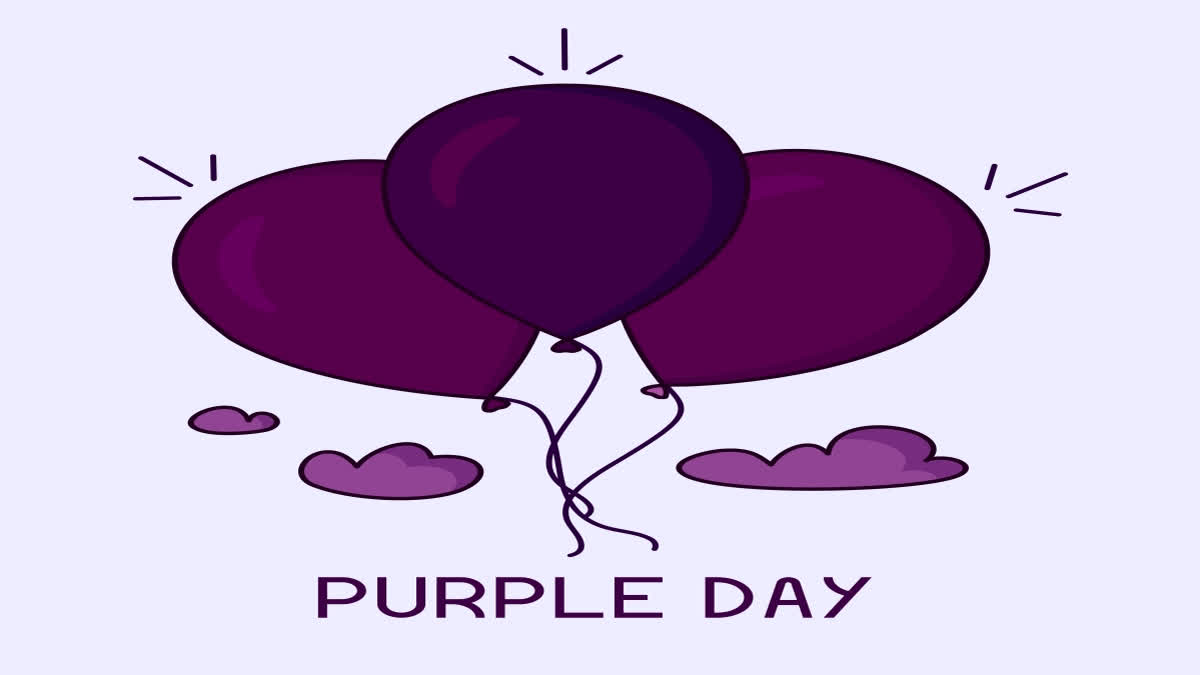Hyderabad:Purple Day is a grassroots celebration that is aimed at raising worldwide awareness of epilepsy, a condition that affects over 65 million people globally.
Epilepsy Awareness Day on March 26 aims to increase the public's knowledge of a neurological condition. Also known as Purple Day, people are encouraged to wear purple in support of epilepsy awareness.
As a neurological condition that causes seizures and often begins in childhood, epilepsy is sometimes misunderstood which can lead to difficulty in social situations.
The idea of Purple Day is to provide education to those who don't understand the condition, as well as for those who have epilepsy to recognise that they are not alone. Because lavender is the international colour for epilepsy and is also a colour that symbolises solitude, it only made sense that purple would be the colour of choice for this important day of recognition and awareness.
Theme for Purple Day 2024: The Theme for Purple Day is #Lets Talk About Epilepsy. This powerful theme emphasises the importance of open communication and breaking down the stigma surrounding epilepsy. India is grappling with an increasing number of cases, especially because many of them have remained undiagnosed.
What is Epilepsy
Epilepsy is a chronic neurological condition characterised by recurrent seizures. Seizures are temporary disturbances in the electrical activity of the brain, causing a variety of physical and psychological symptoms. People of all ages, genders, and backgrounds can be affected by epilepsy, making it a significant global health concern.
Significance of Purple Day:
Over a decade since its inception, Purple Day has grown into a powerful movement with a lasting impact.
Increased Awareness:The Day has significantly raised public awareness about epilepsy, its symptoms, management, and the challenges faced by those living with it.
Reduced Stigma:Open discussions and shared experiences have helped break down the stigma surrounding epilepsy, creating a more supportive and inclusive environment.
Funding and Research: Purple Day initiatives have contributed to valuable research efforts aimed at improving epilepsy diagnosis, treatment, and ultimately, finding a cure.
Advocacy and Policy Change:The Day has inspired advocacy efforts leading to improvements in healthcare access, education, and employment opportunities for people with epilepsy.
Causes and Symptoms:
The exact cause of epilepsy remains unknown in many cases. However, potential factors include: Genetics, Head injury, Brain infection, Stroke, Developmental brain abnormalities
Symptoms of seizures vary greatly depending on the location and severity of the electrical disturbance in the brain. Common symptoms include: Convulsions, Loss of consciousness, Staring spells, Sensory disturbances, Confusion, Automatic behaviours
Diagnosis and Treatment:
An accurate diagnosis of epilepsy is crucial for receiving proper treatment. Diagnosis involves a comprehensive medical history, physical examination, and neurological tests like electroencephalograms (EEGs) and neuroimaging.
Several effective treatment options are available for epilepsy, including:
Anti-seizure medications: These medications help control the electrical activity in the brain and reduce the frequency and severity of seizures.
Surgery: In some cases, surgery may be considered to remove the area of the brain causing seizures.
Vagus Nerve Stimulation (VNS):This non-invasive treatment involves implanting a device that stimulates the vagus nerve to reduce seizure frequency.
Ketogenic diet: This specialised diet may help control seizures in some children.
How to observe Purple Day
- Join the Purple Day movement
- Learn more about epilepsy
- Show your support by wearing purple
- Volunteer at a fundraising event
- Donate to research to cure epilepsy
- If you or someone you know has epilepsy, speak up, and help eliminate the stigma associated with epilepsy
- Know the signs of a seizure and what to do
- Use #EpilepsyAwarenessDay or #PurpleDay to post on social media
Epilepsy in India
There are almost 1.5 million women with epilepsy in the reproductive age in India constituting one-sixth of WWE worldwide. 52 per cent of them are in the reproductive (15–49 years) age group. Reproductive issues are an important consideration for WWE.
Around 30 per cent WWE report an increased propensity for seizures during menstruation, a phenomenon referred to as catamenial epilepsy. A study observed that the risk of seizure was increased during the ovulatory than the anovulatory phase.
Infertility also seems to increase in WWE, especially if they are on multiple drugs. In prospective study with follow-up over 10 years, the risk of infertility was higher with AED exposure versus no exposure and also increased with the number of drugs used.
Celebrities who affected Epilepsy:
Fatima Sana Shaikh: This actress is known for both her drop-dead-gorgeous looks as well as her acting chops. In an 'Ask Me Anything' session on Instagram, the 'Ludo' actress admitted that she had been battling epilepsy for years. She also busted several myths about neurological disease.
Shefali Jariwala: Shefali Jariwala, who starred in the iconic music video (2002) revealed that the reason she had not been much active in the industry was due to epilepsy.
Chanda Gunn:Ice Hockey pro and Olympic medal holder Chanda Gunn is another example of female celebrities with epilepsy. Chanda, who is an Epilepsy Foundation advocate, has always been open about her seizures.
Marion Clignet: Chicago-born French world cycling champion Marion Clignet won multiple medals and tournaments during her career. Marion was diagnosed with generalised epilepsy aged 22.
Neil Young:Canadian singer Neil Young is best known for classic hits like Harvest Moon and Heart of Gold. He revealed that he was diagnosed with epilepsy as a child in a 1975 interview with Rolling Stone magazine, and has also written about the condition in his memoir.
